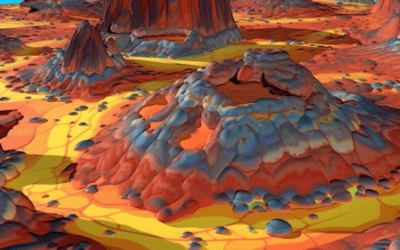Why Can’t You See Stars in Space?
Why can’t you see stars in space? It’s a common question that many people have. After all, we often hear that space is filled with countless stars. So, why is it that astronauts and space travelers don’t see stars when they look out into the vastness of space?
The Atmosphere Plays a Role
The first reason has to do with the atmosphere. Here on Earth, our planet’s atmosphere acts as a protective blanket. It consists of layers of gases that surround us and help shield us from the harshness of space. While the atmosphere provides us with the air we breathe, it also affects what we see when we look up at the night sky.
The atmosphere is made up of various gases, such as nitrogen and oxygen. These gases scatter the sunlight that reaches our atmosphere during the day. This scattering is what makes the sky appear blue. However, at night, when the Sun is no longer visible, the atmosphere can still scatter or absorb light from stars, making them appear dimmer or invisible to the human eye.
The Brightness of Stars
Another important factor to consider is the brightness of stars themselves. Stars emit light through a process called nuclear fusion occurring in their cores. This light travels through space and reaches our eyes, allowing us to see the stars in the night sky. However, most stars are extremely far away from us. Even the closest star to Earth, Proxima Centauri, is about 4.24 light-years away.
Due to their distance, stars appear as tiny points of light in the sky. While some stars are indeed very bright, they still appear faint compared to other sources of light that we encounter on Earth, such as city lights or the Moon. This makes them more challenging to see in the vastness of space, especially when there are other sources of light present.
The Contrast of Light and Dark
Additionally, the contrast between light and dark plays a role in our ability to see stars. On Earth, we often see stars against a backdrop of a dark sky, providing a stark contrast that helps our eyes detect them. However, in space, there is no atmosphere to scatter or absorb light, and there are no nearby sources of light to create contrast.
When looking out from a spacecraft or space station, astronauts are surrounded by an abundance of light. The Sun’s light fills space during the day, creating a brightness comparable to our daytime here on Earth. At night, the Moon’s reflected sunlight can also create a significant amount of brightness in space. These bright sources of light can overpower the faint light emitted by stars, making them difficult to see.
The Limitations of Human Vision
Lastly, we must consider the limitations of human vision. Our eyes are remarkable organs, but their ability to perceive faint light in the absence of contrast and against a backdrop of brightness is limited. When we stare off into the darkness of space, our eyes struggle to pick up the faint light from distant stars, especially when competing with other sources of light.
However, it’s important to note that while stars may be challenging to see in the immediate surroundings of a spacecraft or space station, when astronauts venture out into the darkness of space during spacewalks or other extravehicular activities, they can indeed see stars. Without the interference of the spacecraft’s structure or bright lights, their eyes adjust to the darkness, allowing them to appreciate the beauty of the stars.
In Conclusion
Why can’t you see stars in space? The atmosphere plays a role by scattering or absorbing starlight, making stars appear dimmer. The brightness of stars themselves, their distance from Earth, and the absence of contrast in space further affect our ability to see stars. Additionally, the limitations of human vision make it challenging to perceive faint starlight against a backdrop of brightness. However, spacewalks and activities performed away from spacecraft allow astronauts to fully experience and appreciate the stars in space.












